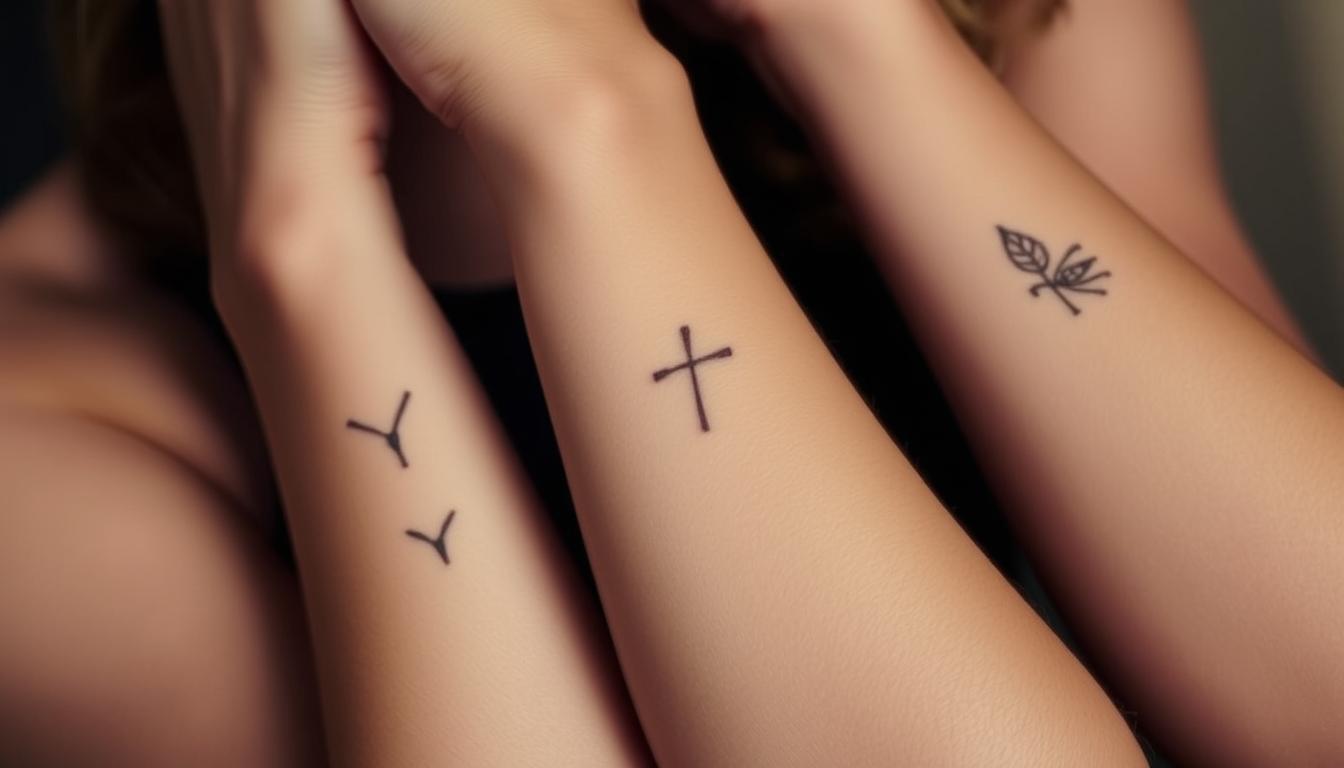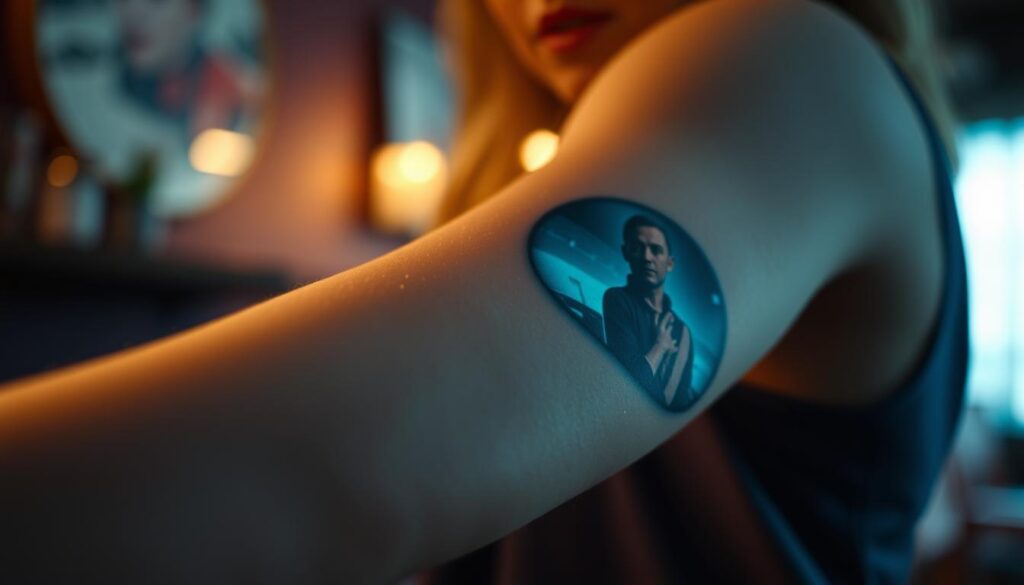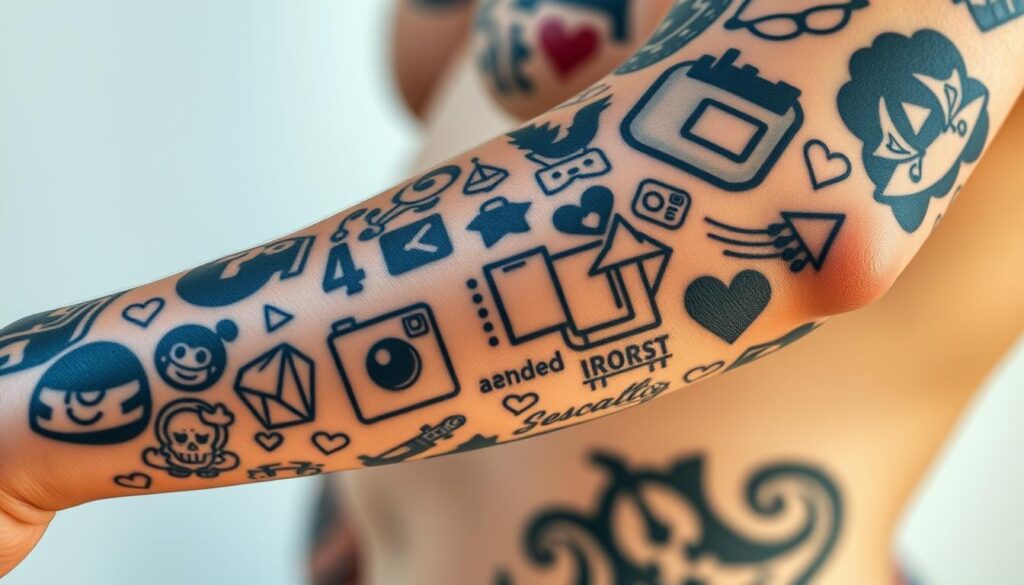
What if everything you thought you knew about celebrity body art was wrong? Those viral photos of the Veronica Mars star covered in intricate designs might have you convinced she’s Hollywood’s most inked actress. But here’s the twist: none of them are real.
The images you’ve seen across social media for years originated from a 2012 comedy sketch. Created for Funny or Die, the temporary body art was part of a hilarious parody about extreme tattooing. Despite being clearly fictional, these pictures continue to fool new audiences daily.
While the beloved performer hasn’t committed to permanent ink, her reasons might surprise you. Personal preferences and relationships play a bigger role than you’d guess. This enduring internet myth reveals how easily entertainment content gets mistaken for reality in our digital world.
Key Takeaways
- The viral tattoo photos originated from a 2012 comedy sketch
- No permanent body art exists despite decade-long rumors
- Personal relationships influenced decisions about ink
- Misinformation spreads easily through social media shares
- Celebrity culture often blurs fiction and reality
- Temporary designs can create lasting false impressions
The Origin of the Tattoo Rumor

Let’s rewind to January 2012 when a comedy website changed how we view celebrity rumors forever. A hilarious parody launched a decade-long myth that still confuses fans today.
Funny or Die Skit and Early Viral Videos
The Body of Lies sketch dropped on January 7, 2012. In this fake behind-the-scenes interview, the actress deadpanned about hiding 214 tattoos under makeup. Her straight-faced delivery made viewers question reality. “My team spends 14 hours covering them daily,” she claimed, keeping character throughout.
Social Media Misinformation and Misinterpretations
When the video went viral again in 2022 via TikTok edits, context vanished. Platforms like Reddit and X (Twitter) spread cropped images without explaining the joke. New audiences believed the temporary ink was real.
| Original Sketch (2012) | Social Media Posts (2022) |
|---|---|
| Full 4-minute comedy video | 15-second TikTok clips |
| Clear parody context | No explanation of satire |
| YouTube platform | Cross-platform sharing |
This cycle shows how digital content morphs over time. What began as obvious humor became “proof” through endless shares. Even now, fans debate whether to trust their eyes.
Unpacking the Claim: Does Kristen Bell Have Tattoos

Let’s cut through the noise surrounding those eye-catching body art photos. The confusion stems from a perfect storm of comedy timing and internet sharing habits.
Comedy Gold vs. Viral Deception
Watch the original 4-minute sketch, and the joke becomes obvious. Bell’s deadpan delivery about hiding 214 designs includes ridiculous details like:
- A throat tattoo reading “Insert gear”
- 72 butterflies representing Apartheid years
- Matching Steve Urkel/Stefan Urquelle shoulder art
Her makeup artist’s claim about 14-hour cover-up sessions adds to the absurdity. Yet when shared as cropped clips, the satire disappears.
Relationship Dynamics and Real Choices
While the viral video shows fake commitment, real-life decisions prove more thoughtful. In a 2016 interview, Bell confessed: “I’ve always wanted one, but my partner isn’t into inked skin.”
| Sketch Fiction | Real-Life Facts |
|---|---|
| 214 hidden tattoos | Zero permanent designs |
| Looney Tunes characters | Meaningful phrase considered |
| Daily makeup cover-ups | Open discussions about ink |
Interestingly, her spouse sports several meaningful tattoos himself. This contrast highlights how personal preferences shape body art choices. Recent podcast revelations show Bell still contemplates getting inked – but on her own terms.
The persistence of this myth reminds us: always check sources before believing viral content. What begins as obvious humor can morph into “facts” through endless shares.
Impact on Social Media and Celebrity Culture

Digital platforms have a funny way of turning fiction into supposed fact. The viral tattoo story reveals how easily humor gets stripped of context online. Platforms reward shocking visuals over explanations, creating endless cycles of confusion.
Public Reaction and Ongoing Speculation
Comments on decade-old posts tell two stories. Some users still argue: “The detail in those images proves they’re real!” Others praise the original performance, with one fan noting: “Her deadpan delivery could convince anyone.”
New audiences keep discovering cropped clips yearly. Each wave brings fresh debates about authenticity in celebrity culture.
Comparison with Other Celebrity Tattoo Narratives
While stars like Ed Sheeran collect meaningful ink, Bell’s fictional designs became more famous. This contrasts sharply with Travis Barker’s 70% tattoo coverage – real art that rarely sparks disbelief.
- Ed Sheeran: 60+ personal symbols
- Travis Barker: Full-body transformation
- Kristen Bell: Zero real tattoos
Media Coverage and Its Role in Shaping the Narrative
Outlets often fuel myths while trying to debunk them. Headlines like “Is She Hollywood’s Most Inked Star?” spread faster than fact-checks. Entertainment sites repost the viral scenes yearly, rarely mentioning their comedic origin.
This cycle shows how media amplifies rumors it claims to clarify. The story persists because drama sells better than truth in today’s attention economy.
Conclusion
Let’s set the record straight once and for all. Those eye-catching designs plastered across social media? Pure fiction. The viral video that started it all was always meant as comedy – temporary ink applied for laughs, not lifelong commitment.
Through multiple interviews, the actress confirmed her clean slate. While playful sketches showed head-to-toe art, her actual body remains a blank canvas. Relationships play a role too – spouse Dax Shepard’s preferences helped delay permanent decisions.
Could that change? Maybe. Recent talks reveal interest in meaningful tattoos, like a phrase honoring children’s welfare. But for now, Kristen Bell stands as proof that digital myths outlive their jokes.
This decade-long mix-up teaches us to question viral content. Next time you see shocking celebrity ink, remember: context matters more than clicks.
